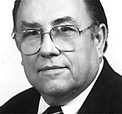

![]()
Other Views


![]()
Other Views
The View From Tokyo
Air travel in
Asia leads worldTOKYO -- World air travel figures are following other demographics such as affluent population bulges. As a result, the heaviest traveled flight sectors are now on Asian routes.
When I told one disbelieving "Frequent Flyer" that the New York-to-Washington, D.C., and Boston-New York routes were no longer at the top of international passenger mileage lists, I was stared at as if I should have my head examined.
"What about Los Angeles-San Francisco?" my friend asked. "Surely that's on the list." I gave him the bad news: "Not even close."
"All right," said Frequent Flyer, "tell me what was the heaviest traveled air route last year."
You could have knocked him over with a feather after he heard my answer:
Haneda-Sapporo, 8.127 million passengers.
Before Frequent Flyer could say, "What's a Haneda?" I filled him in.
According to data from the Japanese Ministry of Transport, the Association of Asia Pacific Airlines (AAPA), the International Commercial Aviation Organization (ICAO) and the U.S. Department of Transportation, traffic between Haneda, one of Tokyo's two airports, and Sapporo airport in the leading city and capital of Hokkaido, Japan's northernmost prefecture, was the world leader.
Business travel and tourism, particularly for skiing on Hokkaido, were given as reasons for the heavy traffic on that particular route.
No. 2 on the world list was even more surprising and caused Frequent Flyer to head for a Ginza bar for a drink without further comment: Taipei-Kaohsiung, capital and second city in Taiwan, 7.173 million passengers. Travel for both business and pleasure was cited.
Third place was Haneda again, this time with the southernmost Kyushu region's commercial capital Fukuoka on the other end: Haneda-Fukuoka, 6.749 million passengers.
In Japan, South Korea, Taiwan and some other nations it is quite common for domestic flights aboard 747 aircraft to be configured with as many as 510 seats, mostly single class, for short haul or shuttle routes.
In the U.S., "jumbo" jets are used mainly for longer, cross-country routes. Short haul or shuttle routes are usually flown in the U.S. by smaller aircraft.
Next on the list amounted to further reflection of the trend of intense passenger traffic between high-population Asian cities: No. 4 Seoul-Pusan, 6.348 million passengers, mostly business travel between South Korea's first and second cities; No. 5 Seoul-Cheju, 5.184 million passengers, travel to and from the capital to a leading island resort city.
A break in the figures listing Northeast Asia at the top came with the next entry, itself something of a surprise: No. 6 Sydney-Melbourne, 4.555 million passengers between Australia's two leading cities, for business and holiday travelers.
Geoff Tudor, public relations manager for Japan Air Lines, which compiled the figures, predicted that mainland China air traffic, such as on the Beijing-Shanghai route, would soon burst onto the list.
CHINA for now is represented on the list by its Special Administrative Region of Hong Kong and Taiwan, which it would like to control: No. 7 Hong Kong-Taipei, 3.977 million passengers.
And finally the United States gets into the act: No. 8 New York-Los Angeles, 3.725 million passengers.
The Malay Peninsula makes the list:
No. 9 Kuala Lumpur-Singapore, 3.178 million passengers between the Malaysia capital and the business city-state of Singapore.
Air travel nostalgia buffs will like the next entry: No. 10 London-New York, 3.131 million passengers. The world isn't what it used to be.
Another all-American spot on the list demonstrates the lure of sun and fun in Florida: No. 11 New York-Miami, 3.093 million passengers.
Finally, we're back at Haneda: No. 12 Haneda-Okinawa, 3.011 million passengers. This is strictly fun travel.
Edward Neilan is an analyst of
East Asian affairs, based in Tokyo.